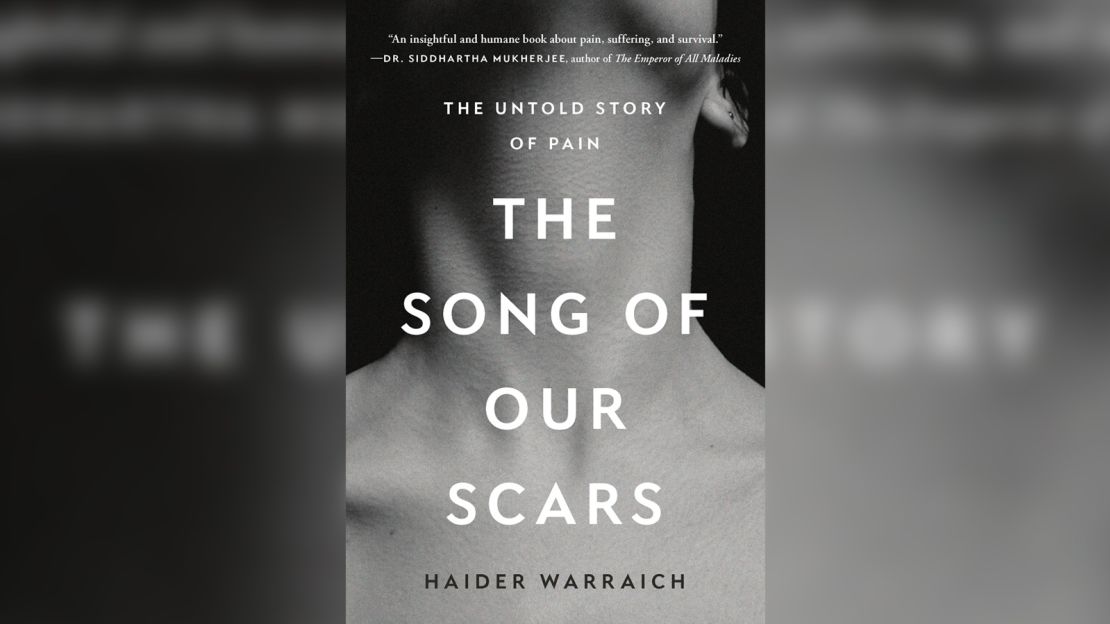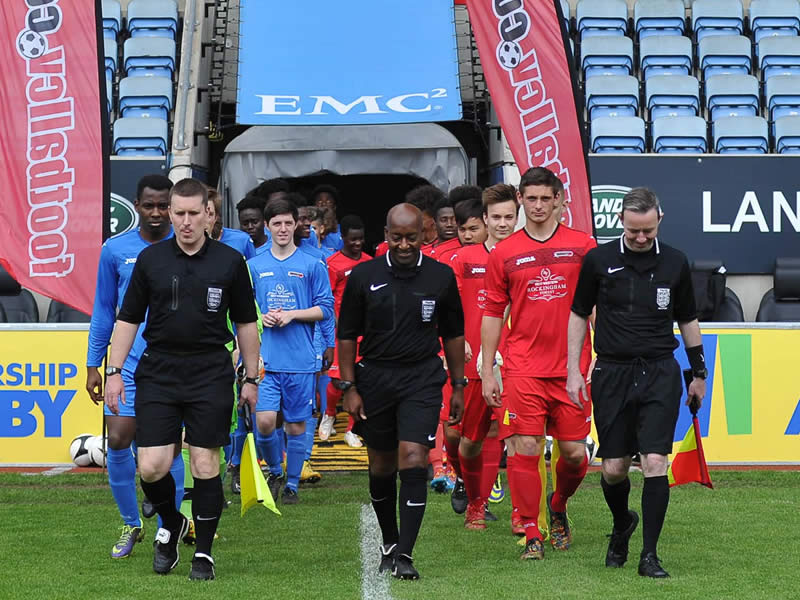Soccer players fake injuries to deceive referees and gain an advantage through stopping play or drawing fouls. Soccer is known for its intense competitiveness, and players are constantly in search of tactics to gain the upper hand.
One such tactic involves faking injuries during a match. By pretending to be injured, players can deceive referees into believing a foul has been committed, resulting in favorable decisions such as free kicks or penalties. These acts of deception not only disrupt the flow of the game but also manipulate the outcome in the player’s favor.
Although frowned upon, the prevalence of diving and feigning injuries in soccer has become a contentious issue that continues to generate debate amongst fans, players, and governing bodies. Understanding why soccer players resort to such tactics is crucial in order to address this concerning trend and uphold the integrity of the sport.

Credit: www.theatlantic.com
The Prevalence Of Fake Injuries In Soccer
When it comes to the world of soccer, there is an unfortunate reality that cannot be ignored: fake injuries are prevalent. This controversial practice has infiltrated the game at all levels, from local matches to international tournaments. The prevalence of fake injuries in soccer is something that demands attention, as it impacts the integrity of the game and the reputation of the players involved.
Common Occurrences And Media Attention
Sadly, fake injuries have become an all-too-familiar sight on soccer fields worldwide. Players often resort to simulation tactics to deceive referees and gain an unfair advantage over their opponents. The act of faking injuries can range from writhing in pain after minimal contact to exaggerating the seriousness of a collision.
These incidents rarely go unnoticed, as they are often caught on camera and swiftly shared across various media outlets. Social media platforms are flooded with clips depicting players falling to the ground, clutching body parts, only to miraculously recover moments later. Such instances attract significant media attention, creating a stir among fans, pundits, and players alike.
This media attention not only brings the issue of fake injuries to the forefront of public discourse but also raises questions about the integrity of the game. Soccer is meant to be a sport of skill, athleticism, and fair play. However, when fake injuries take center stage, it tarnishes the sport’s spirit and undermines the credibility of those involved.
Impact On The Game And Players’ Reputation
The prevalence of fake injuries in soccer has far-reaching consequences that extend beyond the field. Primarily, it disrupts the flow and rhythm of the game, causing unnecessary stoppages and interrupting the natural ebb and flow of play. These interruptions hinder the enjoyment of the sport and can frustrate both players and spectators.
Furthermore, fake injuries have a detrimental effect on the reputation of soccer players involved in such acts. A player’s credibility is significantly undermined when they are caught feigning or exaggerating injuries. Their actions not only deceive referees but also undermine the very essence of teamwork and sportsmanship. This dishonorable behavior may tarnish their reputation in the eyes of fans, fellow players, and coaches, leading to lasting negative consequences for their careers.
It is crucial to address the prevalence of fake injuries in soccer and tackle this issue head-on. The integrity of the game and the reputation of players are at stake. By recognizing the common occurrences of fake injuries and understanding the media attention they receive, we can collectively work towards upholding the values of fair play, honesty, and respect in the beautiful game of soccer.
Psychological Factors Behind Fake Injuries
Soccer, like any other competitive sport, involves intense physicality and high-pressure situations. Players are constantly seeking ways to gain an advantage over their opponents, and unfortunately, this sometimes leads to the act of faking injuries. However, the reasons behind these deceptive actions go deeper than meets the eye. It is essential to understand the psychological factors that drive soccer players to engage in this behavior.
Competitive Nature And Desire To Gain Advantage
Soccer players are inherently driven by competition. They are constantly battling for victory and lookout for any opportunity to gain an upper hand during the game. The desire to gain an advantage over the opposing team pushes players to fake injuries in order to disrupt the flow of the game and potentially gain a tactical advantage. By feigning an injury, players can halt the momentum of the opposing team, giving their own team a chance to regroup, reorganize, or receive medical attention. This strategic manipulation of the game may give the faking player’s team a valuable opportunity to regain control and shift the game’s dynamics in their favor.
Fear Of Failure And Pressure To Perform
The fear of failure is a common psychological factor that drives soccer players to fake injuries. Being in the spotlight and facing immense pressure to perform can burden players with anxiety and fear. Faking an injury provides an escape route from potential failure or disappointment. By acting as if they are injured, players may avoid taking responsibility for mistakes or poor performance. This psychological coping mechanism allows players to deflect blame from themselves and redirects it onto external factors such as injury.
Strategic Manipulation Of The Game
Last but not least, strategic manipulation of the game is another factor contributing to fake injuries in soccer. Players often engage in this deceptive behavior to influence the referee’s decisions, particularly when it comes to fouls or penalties. By exaggerating the impact of a tackle or collision, players aim to draw the referee’s attention and potentially gain a favorable outcome, such as earning a free kick or having the opposing player penalized. This calculated maneuver is aimed at gaining an upper hand within the rules of the game, exploiting the inherent subjectivity in the interpretation of fouls and penalties.
In conclusion, the psychological factors behind fake injuries in soccer are deeply rooted in the competitive nature of the sport. Players seek any advantage they can get, fear failure, and strategically manipulate the game to their benefit. Understanding these psychological underpinnings can shed light on the reasons behind such behavior and help address this issue within the soccer community.
Incentives And Rewards For Faking Injuries
When it comes to soccer, one controversial aspect of the game is the tendency of players to fake injuries. This strategic tactic has become increasingly prevalent in recent years, with players often feigning pain and going to great lengths to convince referees and opponents alike that they have been foully dealt with. The question that arises is why do soccer players fake injuries? One of the main reasons lies in the incentives and rewards associated with this deceptive behavior.
Time-wasting Tactics And Disrupting Opponents’ Momentum
Soccer is a fast-paced game, and every second matters when it comes to gaining an advantage. Faking injuries allows players to slow down the tempo and disrupt the momentum of their opponents. By exaggerating the impact of a foul or contact, players can eat away at the precious playing time. This tactic not only frustrates opponents but also gives the pretending players’ team a chance to regroup, reorganize, and catch their breath.
Drawing Fouls And Penalties
One of the primary rewards of faking injuries is the opportunity to draw fouls and penalties. Referees are responsible for making split-second decisions based on what they perceive during the game. When a player convincingly simulates pain or appears to be wronged, sympathetic referees are more likely to award free kicks, penalties, or even red cards against the opposing team. This advantage can significantly impact the outcome of the game and provides players with a powerful incentive to pretend they are injured.
Gaining Sympathy And Influencing Referees’ Decisions
Soccer is a game that relies heavily on human judgment, and referees are not immune to the emotional persuasions exhibited by players. By faking injuries, players aim to gain sympathy from the referees and influence their decisions in subsequent situations. When a player appears to be genuinely injured, referees may be more inclined to favor their team in future decisions, such as overlooked fouls or eased yellow card offenses. This psychological manipulation ultimately contributes to the player’s ability to shape the game in their favor.
In conclusion, the incentives and rewards for faking injuries in soccer are multi-faceted. From time-wasting tactics and disrupting opponents’ momentum to drawing fouls and penalties, and gaining sympathy to influence referees’ decisions, players resort to this deceptive behavior to gain an unfair advantage on the field. This practice raises questions about sportsmanship and the integrity of the game, but as long as the incentives persist, players will continue to exploit them to secure victory.
Cultural And Historical Perspectives On Faking Injuries
Understanding the reasons behind why soccer players fake injuries requires a deep dive into the cultural and historical factors that have shaped this behavior. From historical examples and cultural influences to differences between leagues and countries, and changing attitudes and perceptions over time, there are various components that contribute to this phenomenon.
Historical Examples And Cultural Influences
Throughout the history of soccer, there have been numerous instances where players have resorted to faking injuries as a strategic move. One prominent example dates back to the 1982 FIFA World Cup, where West German goalkeeper Harald Schumacher’s infamous collision with French player Patrick Battiston led to a severe injury. This incident, along with others, has become ingrained in the cultural fabric of the sport, influencing future generations of players.
Furthermore, cultural aspects play a significant role in shaping players’ behavior. In certain countries, where fanatical support for soccer teams runs high, there is immense pressure on players to maximize their chances of winning. This intense competitive culture, coupled with a desire to gain an advantage over opponents, can often lead players to resort to faking injuries as a means to manipulate the game or gain sympathy from referees and spectators.
Differences Between Leagues And Countries
It is essential to acknowledge that the prevalence and acceptance of faking injuries vary across different leagues and countries. In some leagues, such as those with a strong emphasis on fair play and sportsmanship, the act of feigning injury may be viewed more critically, leading to stricter punishment for players engaging in such behavior.
On the other hand, in leagues or countries where a more theatrical approach to the game is appreciated, players may be more inclined to exaggerate and simulate injuries. This can be attributed to a desire for theatricality, hoping to influence the referee’s decisions or provoke a reaction from opposing players.
Changing Attitudes And Perceptions Over Time
Over the years, attitudes towards faking injuries have evolved, with an increasing focus on fair play and sportsmanship influencing player behavior. Football governing bodies and organizations have implemented stricter regulations and technology to detect and penalize simulation and injury feigning.
Moreover, the media and public scrutiny have played a crucial role in holding players accountable for their actions. The advent of replays and real-time footage has made it more challenging for players to deceive referees and spectators. As a result, players are now more aware of the consequences they might face, both in terms of penalties during the game and their reputation off the field.
In conclusion, understanding why soccer players fake injuries requires analyzing the cultural and historical perspectives surrounding the sport. From tracing historical examples and cultural influences to recognizing differences between leagues and countries, and acknowledging changing attitudes over time, it becomes evident that multiple factors contribute to this phenomenon.
The Consequences Of Faking Injuries
When it comes to soccer, faking injuries is a widespread issue that has plagued the sport for years. While some players may think that exaggerating or pretending to be hurt is harmless, there are serious consequences that can arise from this behavior. The consequences of faking injuries not only extend to the individual player but also have ripple effects on the integrity of the game, team dynamics, and potential punishments. In this article, we will explore these consequences and shed some light on why soccer players should think twice before resorting to such actions.
Loss Of Integrity And Sportsmanship
Faking injuries in soccer can lead to a significant loss of integrity and sportsmanship within the game. Soccer, like any other sport, relies on players’ honesty and fair play to maintain its essence and spirit. When a player fakes an injury, they are essentially deceiving the referees, their teammates, the opposing team, and the spectators. This dishonest behavior undermines the integrity of the game and erodes the trust and respect that players should have for one another.
Negative Impact On Team Dynamics
Faking injuries can also have a negative impact on team dynamics. Soccer teams thrive on teamwork, trust, and cohesion. When a player fakes an injury, it disrupts the flow of the game and disrupts the team’s rhythm. Other players may become frustrated or lose confidence in their teammate’s honesty, leading to breakdowns in communication and coordination on the field. This can ultimately hinder the team’s performance and jeopardize their chances of success.
Punishments And Disciplinary Actions
Punishments and disciplinary actions can be severe for players caught faking injuries. Soccer governing bodies such as FIFA and UEFA take this issue seriously and impose strict penalties to maintain the fairness of the game. These punishments can range from fines and suspensions for individual players to point deductions or even disqualification for teams involved in widespread simulation or diving. Not only can these consequences harm a player’s reputation and career, but they can also have lasting effects on the team’s standing in competitions.
In conclusion, the consequences of faking injuries in soccer are far-reaching and detrimental. Players who engage in such behavior not only compromise the integrity and sportsmanship of the game but also disrupt team dynamics and risk severe punishments. It is crucial for soccer players to remember the importance of honesty and fair play. By upholding these values, they can contribute to a positive and genuine soccer experience for themselves, their teammates, and the fans.
Frequently Asked Questions Of Why Soccer Players Fake Injuries
Why Do Soccer Players Fake Injuries?
Soccer players fake injuries to gain an advantage, disrupt the flow of the game, waste time, or influence referee decisions. It can also be a strategy to draw fouls, get opponents booked, or earn free kicks or penalties. Faking injuries is seen as a form of gamesmanship in the sport.
How Do Soccer Players Fake Injuries?
Soccer players fake injuries by exaggerating contact, simulating pain, and acting out scenarios to make it appear as if they have been fouled or hurt. They might roll on the ground, clutch their body parts, or writhe in pain to deceive the referees and opponents.
It requires skill and theatricality to make it convincing.
Why Are Soccer Players Criticized For Faking Injuries?
Soccer players are criticized for faking injuries because it goes against the spirit of fair play and sportsmanship. It can disrupt the flow of the game, waste time, and tarnish the reputation of the sport. Fans and pundits often perceive it as cheating and question the integrity of the players involved.
Conclusion
Ultimately, soccer players resort to faking injuries due to a combination of factors such as gaining a competitive advantage, manipulating referees’ decisions, and attempting to influence the momentum of the game. While this unethical behavior may capture spectators’ attention momentarily, it ultimately detracts from the integrity of the sport.
In order for soccer to maintain its authenticity, players, referees, and governing bodies must work collectively to discourage and penalize such deceptive actions. A commitment to fair play and sportsmanship is essential to ensure the integrity and enjoyment of the game for all involved.

General Manager & Auditorial Head.
Killian Jake is a World Sports Traveler and hobbyist sports lover. By exploring different sorts of playing modules like indoor, outdoor, and many more. As for professionalism and writing, it’s helpful to give you the right suggestions on different games and sports.





